 |
|||||||||||||||
Note that this page, as well as the others that have "Extra" in their titles, are here to present images that would not fit on other pages because of limitations on page size. |
||
— X-15 no. 1 s/n 56-6670 — |
||
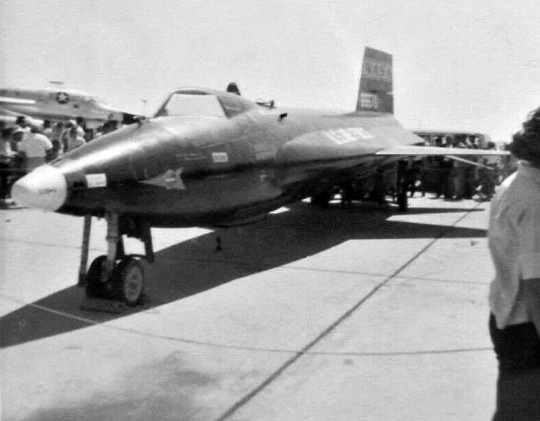 |
||||
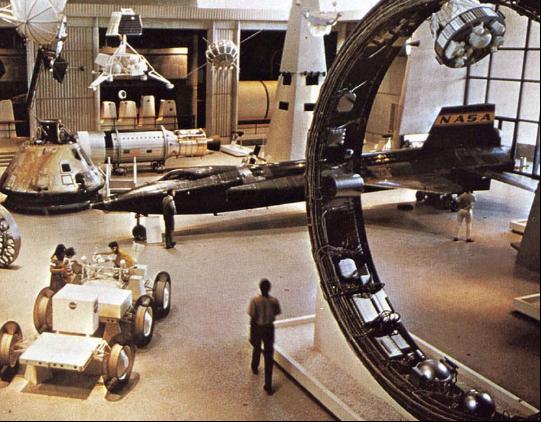 |
||||
X-15 no. 1 at the Edwards AFB Open House in May 1964. Joe Engle just completed his 5th flight on 19 May with mission 1-48-75 to an altitude of 195,800 feet. author's collection |
||||
X-15 no. 1 on loan to the U.S. Space and Rocket Center. U.S. Space and Rocket Center |
||||
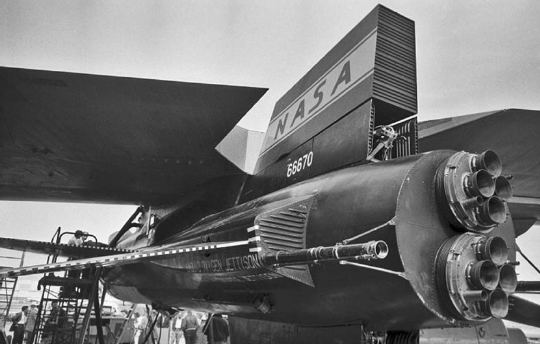 |
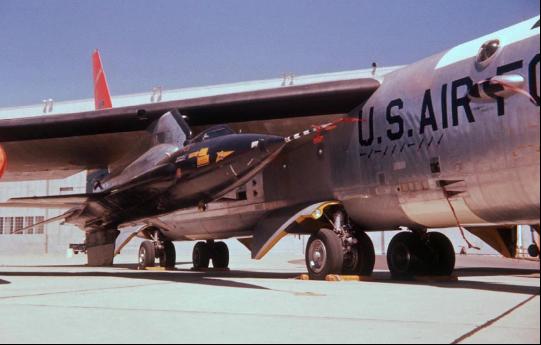 |
|||
X-15 no. 1 on B-52 no. 008. Mission 1-3-8 would be the first NASA flight in the program and be flown by Joe Walker to Mach 2.0 at an altitude of 48,630 feet. Armstrong Flight Research Center |
X-15 no. 1 ready for mission 1-7-12 on 12 May 1960, mounted to B-52 no. 003. Joe Walker made the first flight to Mach 3 without loss of the pilot on this mission. John Jurist collection |
|||
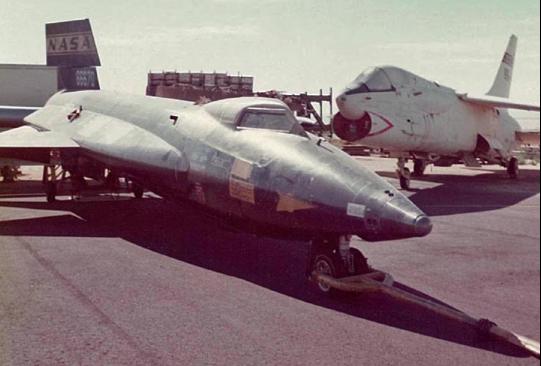 |
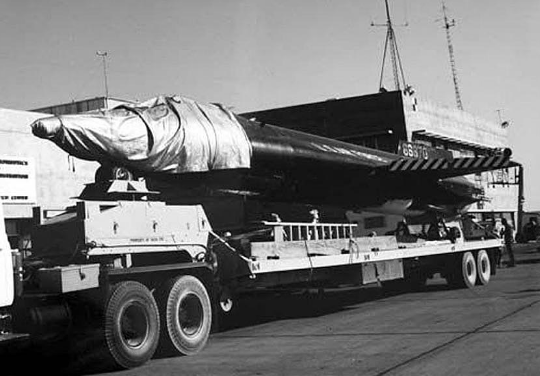 |
||||
X-15 no. 1 in outdoor storage at Edwards after the program was completed. An F-8 Crusader also sits in storage behind the rocket plane. author's collection |
|||||
X-15 no. 1 loaded on its flatbed transport truck for movement to Edwards. North American Aviation |
|||||
 |
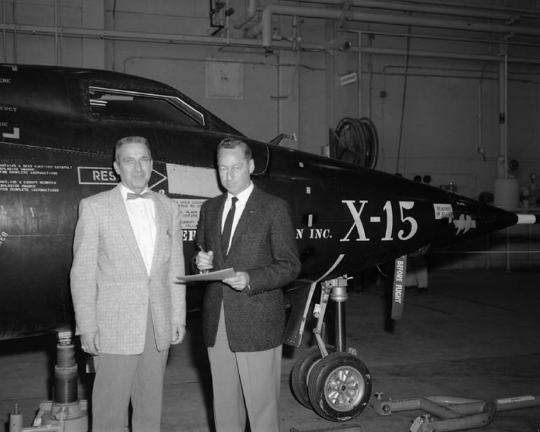 |
|||||
After landing, and before the X-15 is towed back to the NASA hangar, the nose wheels are switched out to prevent damage. Note the pilot suiting van behind the X-15. Armstrong Flight Research Center |
||||||
A reporter preparing to do a stand-up segment in front of X-15 no. 1. NASA Headquarters |
||||||
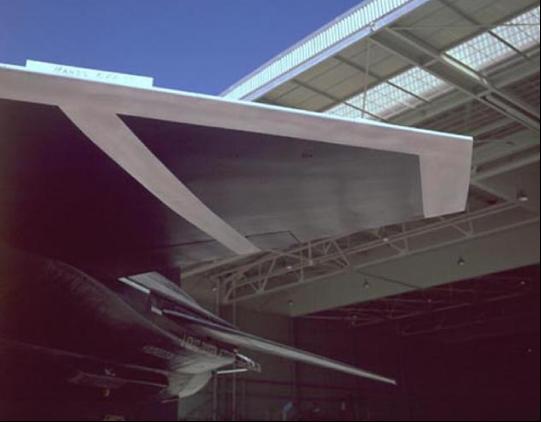 |
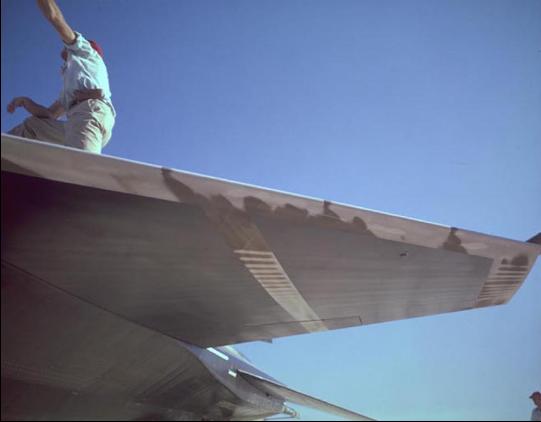 |
|||
Thermal paint was used to see how temperature affected areas on the wing of X-15 no. 1. At left is the wing prior to flight, and at right is post-flight. Edwards History Office |
||
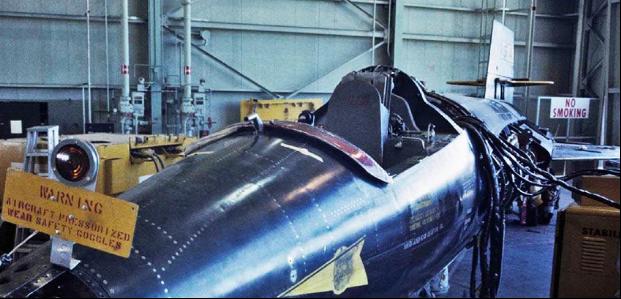 |
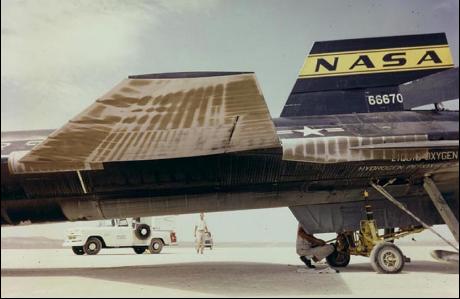 |
|||
X-15 no. 1 under heavy maintenace in the NASA Hangar. Armstrong Flight Research Center |
Another flight with thermal paint on the left wing and parts of the fuselage. Armstrong Flight Research Center |
|||
 |
||
The Apollo Horizon Photometer was an experiment flown on X-15 no. 1 by MIT. The Phase 1 unit (left) was installed in April 1966 and Phase 2 was flown in 1968. Armstrong Flight Research Center |
||
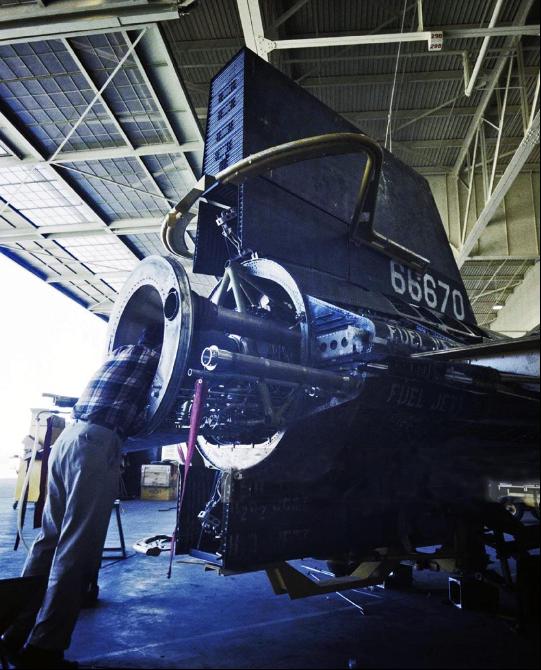 |
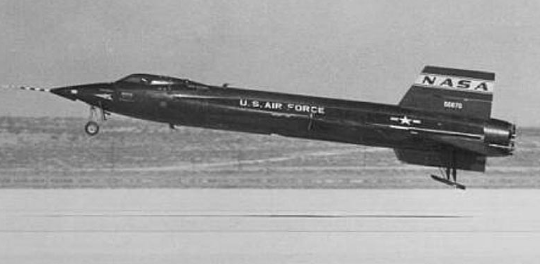 |
|||||
Joe Walker lands at the completion of the first NASA X-15 flight on 25 Mar. 1960. Edwards History Office |
||||||
 |
||||||
In October 1972, X-15 no. 1 went on display at Edwards where these open cockpit photos were taken. This was while awaiting construction of the new National Air and Space Museum, which opened in 1976 with the X-15 in the Milestones of Flight gallery. author's collection |
||||||
A NASA rocket shop guy has his head inside the LR-99 rocket on 23 Apr. 1965. Armstrong Flight Research Center |
||||||
 |
 |
|||
Left-hand console with an ejection handle, engine throttle and one side stick controller. author's collection |
Right-hand console showing the second ejection handle and the RCS controller. author's collection |
|||
 |
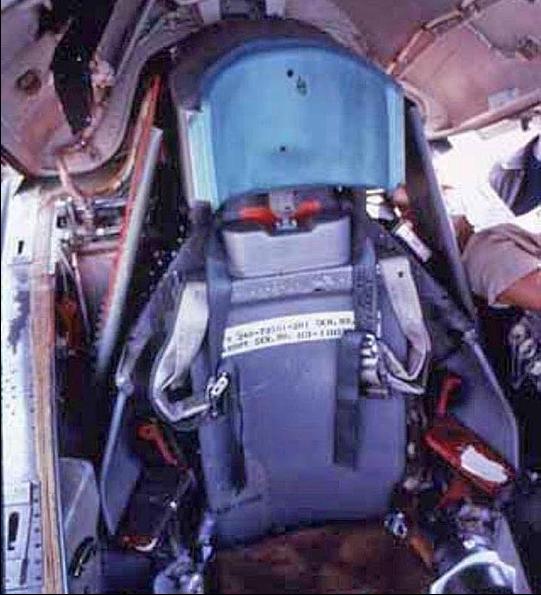 |
|||
Inside the cockpit canopy of X-15 no. 1 in October 1972. author's collection |
The pilot's ejection seat. Note that the headrest would be jettisoned prior to ejection. author's collection |
|||
— X-15 no. 2 s/n 56-6671 — |
||
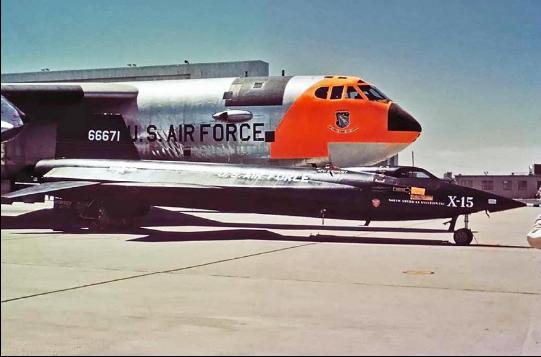 |
 |
|||
X-15 no. 2 and B-52 no. 003 at the Edwards AFB Open House on 19 May 1959. photo by Richard Lockett |
This X-15 would make the first powered flight with Crossfield on 17 Sep. 1959. photo by Richard Lockett |
|||
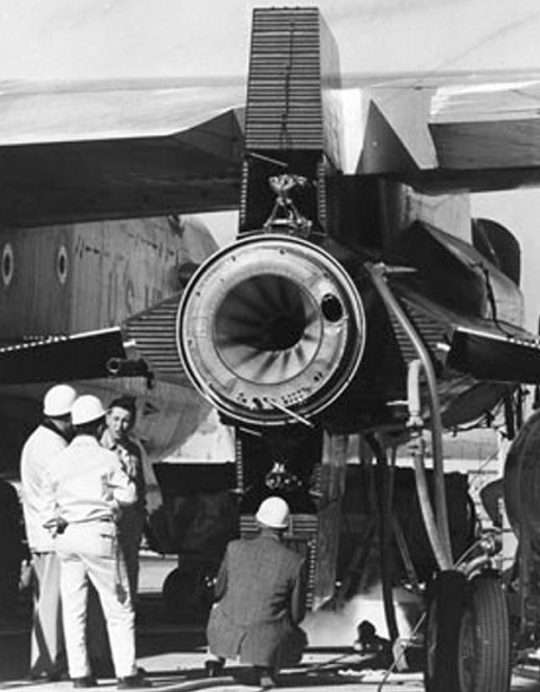 |
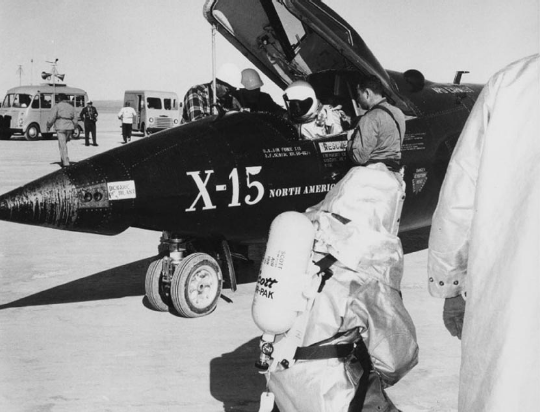 |
|||||
Crossfield on the lakebed after mission 2-10-21 on 15 Nov. 1960. This was the first use of the XLR-99-RM-1 rocket engine in flight. North American Aviation |
||||||
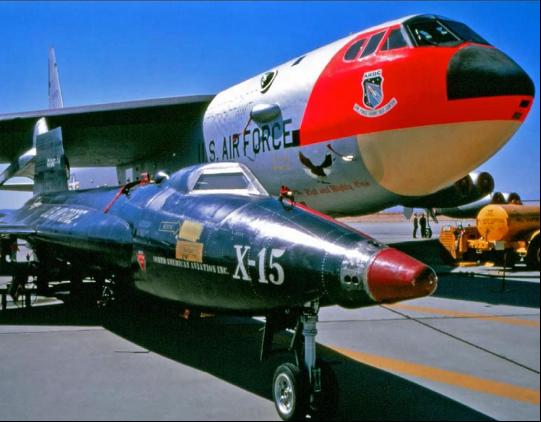 |
||||||
Crossfield (next to the two men in white on the left), checks out X-15 no. 2 with the newly-installed LR-99 rocket engine prior to the first flight using the "Big Engine." Armstrong Flight Research Center |
||||||
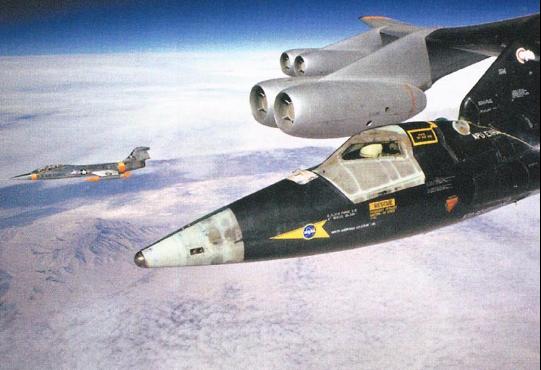 |
||||||
X-15 no. 2 next to B-52 no. 003. photo by Bob Archer |
||||||
 |
||||||
White ready for launch on mission 2-21-37 on 9 Nov. 1961 with F-104 chase close by. Armstrong Flight Research Center |
Another image of X-15 no. 2 on display at an Edwards AFB Open House. photo by Bob Archer |
|||
 |
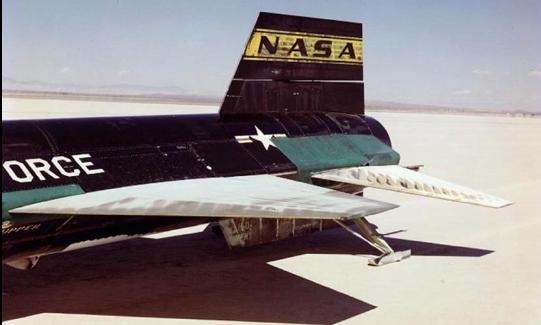 |
|||||
Forrest Petersen flew mission 2-19-35 on 28 Sep. 1961 with large swaths of the rocket plane covered in various types of thermal paint. Note the left wing and horizontal stabilizer are painted in a similar white material to that shown on X-15 no. 1 in images above. Additionaly, areas around the wing and stabilizer root were covered in a different material (green). Temperatures of more than 1,000°F were recorded at Mach 5.30 or 3,600 mph. This was Petersen's 4th X-15 flight, and he achieved his highest speed and altitude (101,800 feet) on this same mission. Armstrong Flight Research Center |
||||||
Paul Bikle (L), in front of X-15 no. 2, with the film crew for "Research Project: X-15." NASA Headquarters |
||||||
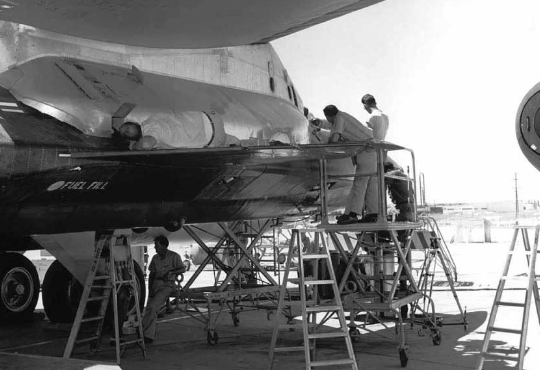 |
|||||
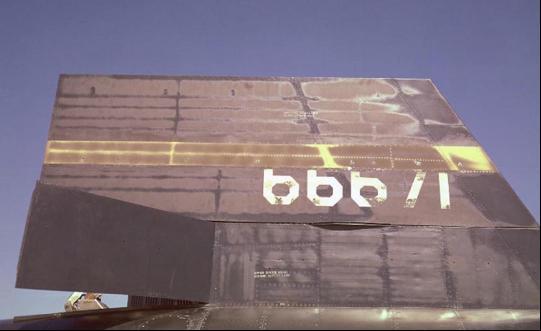 |
|||||
The upper vertical tail of X-15 no. 2 showing the numerous times it has been repainted, and how the markings get burned away during flight. The ghost of the lower yellow stripe of the NASA logo is seen, along with part of the tail number. Sometimes the NASA logo was on both sides of the tail, and sometimes only on one side. Armstrong Flight Research Center |
|||||
Ladders abound as X-15 no. 2 is prepared for flight. Armstrong Flight Research Center |
|||||
 |
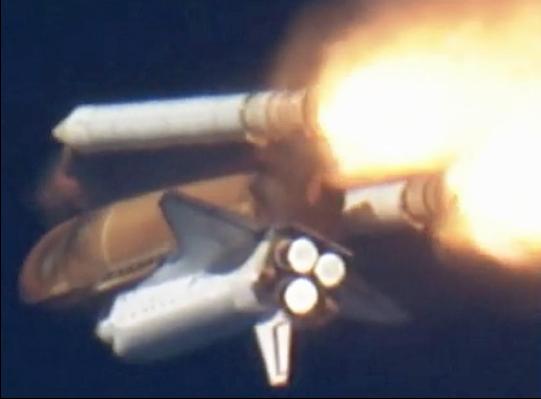 |
|||
The X-15A-2 sits for a portrait beneath the nose of the XB-70A Valkyrie. The A-2 is equipped with two external tanks to provide an extra 60 seconds of engine thrust. Armstrong Flight Research Center |
The Space Shuttle used Solid Rocket Boosters in the same way the X-15A-2 used its external tanks. Both jettisoned their tanks at a similar speed and altitude. NASA |
|||
— X-15 no. 3 s/n 56-6672 — |
||
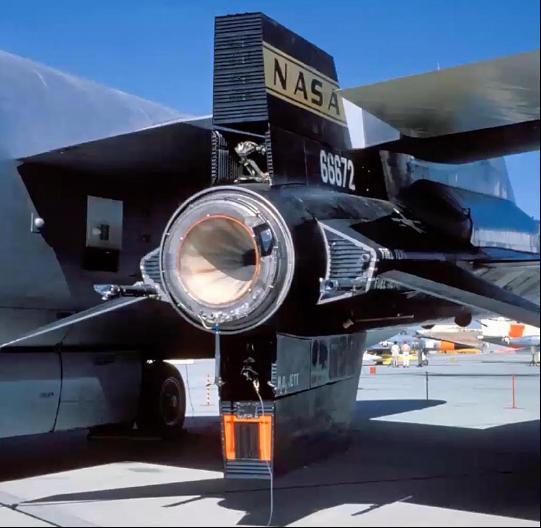 |
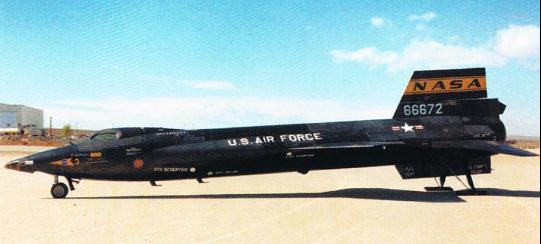 |
|||
Left side portrait of X-15 no. 3 on 2 Apr. 1963. Armstrong Flight Research Center |
||||
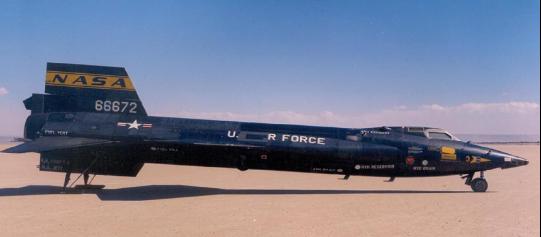 |
||||
Looking at the business end of X-15 no. 3, loaded on the wing pylon of the mothership. Armstrong Flight Research Center |
Right side portrait of X-15 no. 3 three months later, on 2 Jul. 1963. Armstrong Flight Research Center |
|||
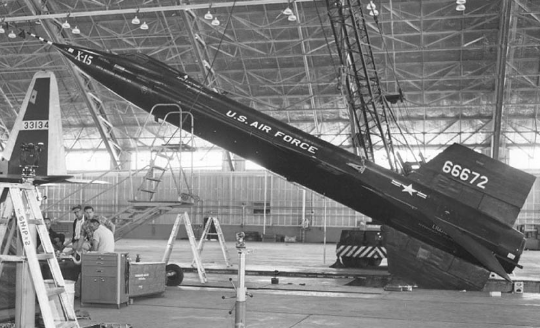 |
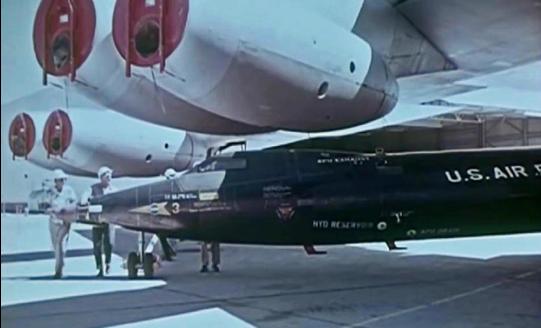 |
|||
X-15 no. 3 being hoisted on 19 May 1960. Note that the nose spike on this aircraft would be removed before making its first flight, and will be replaced by the Q-Ball. North American Aviation |
X-15 no. 3 being rotated into position so that it can be raised and mounted to the B-52's right wing pylon. NASA Headquarters |
|||
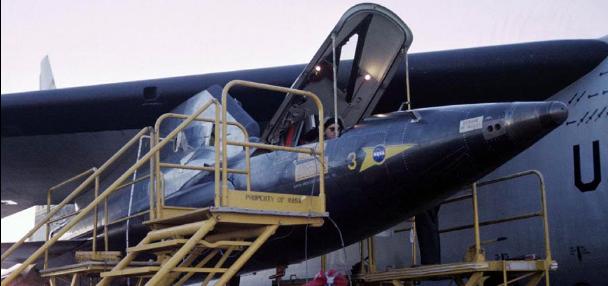 |
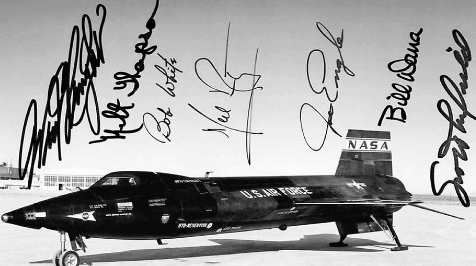 |
|||||
Seven X-15 pilots signed this image of X-15 no. 3. (L-R) Pete Knight, Milt Thompson, Bob White, Neil Armstrong, Joe Engle, Bill Dana, and Scott Crossfield. Armstrong Flight Research Center |
||||||
Mounted to the pylon, X-15 no. 3 is being prepared for its next mission. Armstrong Flight Research Center |
||||||
 |
||
A razor sharp leading edge was installed on X-15 no. 3, and flown on 42 out of the 65 total missions flown by this aircraft before it was lost on 15 Nov. 1967. The image on the left shows how the edge had to be trimmed to clear the cutout in the right wing of the B-52 that accommodated the X-15's upper vertical tail surface. Edwards History Office |
||
— Multiple and Miscellaneous Aircraft — |
||
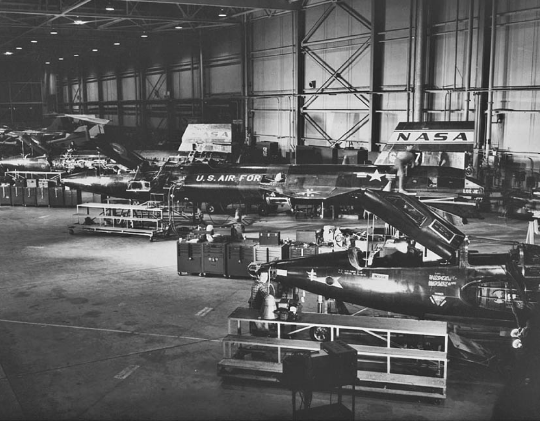 |
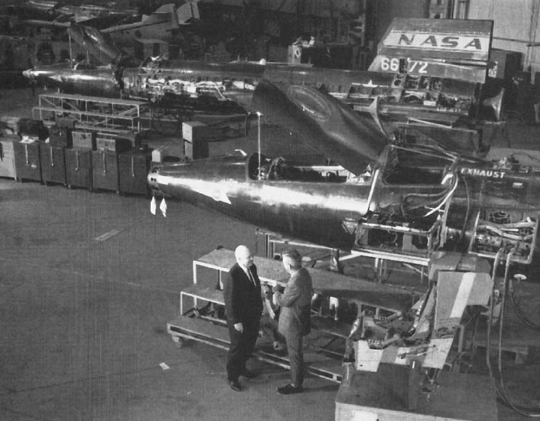 |
|||
All three X-15s at night, in the NASA hangar, lined up with X-15 no. 1 in the foreground, the X-15A-2 in the middle, and X-15 no. 3 in the background. This was all part of the setup for filming the NASA documentary "Research Project: X-15" on 23 Apr. 1965. NASA Headquarters |
Paul Bikle is interviewed for the NASA documentary film. He is standing in front of the X-15A-2, which will be flown by Jack McKay in three days. X-15 no. 3, seen further back in the hangar, was just flown by Joe Engle two days prior to filming. NASA Headquarters |
|||
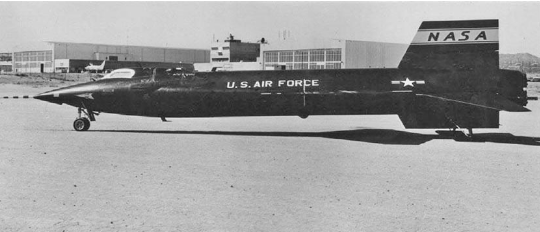 |
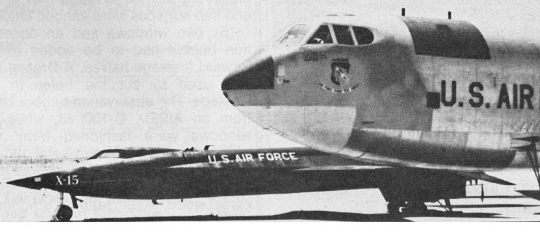 |
|||
An earlier portrait of one of the X-15s sporting the new NASA tail livery. Armstrong Flight Research Center |
An X-15 sits behind the B-52 during a static display of the two vehicles. photo by Bob Archer |
|||
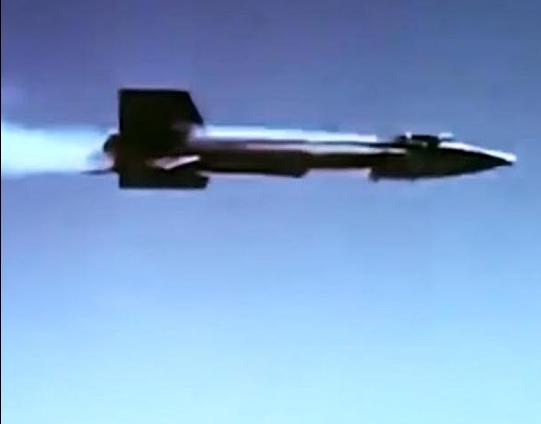 |
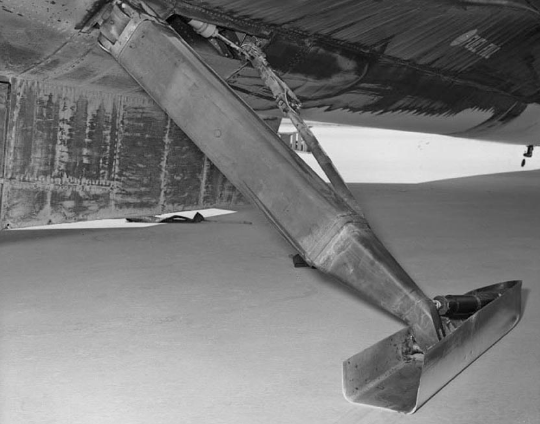 |
|||
An X-15 quickly outpaces the mothership and chase aircraft after lighting the rocket. NASA Headquarters |
The right main landing skid soon after bringing the X-15 to a halt on the lakebed. Armstrong Flight Research Center |
|||
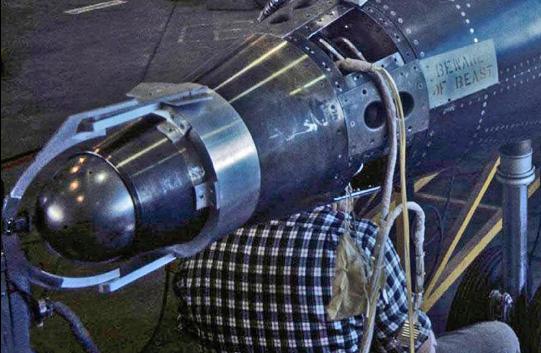 |
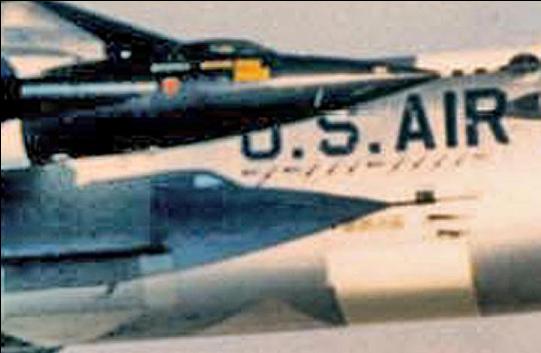 |
|||
A technician working on the nose ballistic control system rockets on 23 Apr. 1965. NASA Headquarters |
The X-15 on the wing pylon casts a distinct shadow on the B-52's fuselage. author's collection |
|||